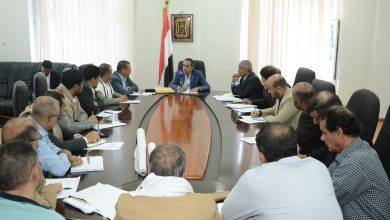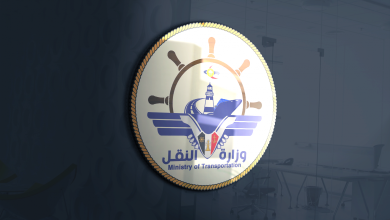Saving Safer ship… Result of ongoing efforts of national authorities of Sana’a

Yemeni wisdom was demonstrated by the Yemenis’ victory in ending the Safer crisis and rescuing the floating reservoir, which is about 4.8 nautical miles off the coast of Hodeida province and carries an estimated 1 million and 140,000 barrels of crude oil.
This comes more than eight years after the United States-United Arab Emirates Aggression Coalition countries procrastinated in allowing the export of crude oil or conducting maintenance of the vessel and unloading its cargo to avoid an imminent environmental disaster, on Yemen and the region in general.
The procedures for the offloading of the Safer to a replacement vessel, which followed repeated appeals and demands by the Sana’a national authorities to the United Nations to assume full responsibility for finding solutions to prevent oil spills or tank explosions, and to urgently maintain the vessel and unload the quantities on board to avoid the risks of contamination of the territorial waters in the Red Sea.
For eight years, the US-Saudi-UAE Aggression Coalition, which launched a internecine warfare against the Yemeni people since March 26, 2015, and its targeting of the country’s infrastructure and capabilities, has been stalling and preventing the arrival of United Nations technical teams to study the status of the Safar vessel and the potential environmental disaster threatening the countries bordering the Red Sea.
The aggression States not only blocked the arrival of experts and technical teams to conduct maintenance work on the vessel, but also deliberately delayed the handling of the crisis to disrupt Sana’a’s crude oil spill from the floating tank or its explosion.
The United States-Saudi Alliance’s obstruction was not limited to not only permitting the export of the quantities of oil in the floating reservoir, but its malice and criminality reached the threshold of preventing the supply of the ship with fuel oil, which is necessary for its operation and maintenance, to protect it from corrosion and damage.
Despite repeated calls from the United Nations, the international community and environmental organizations, the national authorities in Sana ‘a have assumed responsibility and have endeavoured with all means and possibilities to find solutions and remedies for the ship to avoid all threats to navigational activity and maritime safety.
Those persistent appeals and demands, the United Nations has been unable to deal positively with them in order to avoid the explosion of the floating reservoir and an environmental disaster whose effects and repercussions will be devastating to the region’s marine environment and the world whose international maritime corridor will be affected.
In order to avert the marine environmental disaster, the Government of Sana ‘a continued to send warning messages, repeated demands and continued calls, and expressed the hope that the international community, represented by the United Nations and the Security Council, will take urgent action and binding action, to avert an imminent disaster caused by any oil spill that could cost approximately $20 billion to clean up the marine environment according to international reports.
At that time, the United Nations was reluctant to make mirage promises, and, as usual, disavowed its responsibility as an umbrella for Member States under its roof, including Yemen, and bargained for the Safer crisis by acquitting the executioner and holding the victim responsible for the disaster.
Appeals and calls by the Sana’a authorities continued, but they received no response or interaction from the United Nations. The aggression states continued to obstruct the path of finding solutions to the Safer crisis, whether unloading the amount of crude oil or allowing the entry of technical teams to conduct maintenance of the vessel, this was motivated by outbidding and extortion, with the aim of holding the Sana’a party responsible in this aspect.
Sana’a has launched several initiatives on the Safer crisis to avert its catastrophic risk, and has been rejected by the Aggression Coalition and the hotel government, including President Salih al-Samad’s initiative early in 2017, which included giving the United Nations the role to allow the export of the ship’s oil stockpile and selling it for medicines to the Yemeni people, on May 1, 2019, the Supreme Political Member Mohammed Ali Al-Houthi called on the United Nations and the Security Council to establish a mechanism based on the sale of Yemeni crude oil from Safer in exchange for the supply and import of petroleum, diesel and domestic gas, and to return what is sold to Sana’a and Aden banks and allocate it for the payment of employees’ salaries.
The Revolutionary Leadership and the Supreme Political Council were interested in addressing Safer’s crisis and continued to follow the procedural and practical steps in order to make successful what had been agreed with the United Nations regarding the ship’s discharge as soon as possible in order to preserve the marine environment from the risk of pollution that might hinder navigation in the Red Sea, Bab al-Mandeb and the region in general.
Arbitrary actions and aggressive steps have coincided with the aggression coalition’s seizure of oil and gas vessels and its continued obstruction of entry into the port of Hodeidah to unload its cargo in a clear intention to stifle the Yemeni people and cause successive economic and living crises.
The aggression coalition did not stop there, but went beyond what was even more egregious by targeting ports, destroying economic installations, killing and detaining fishermen and confiscating their boats, looting fish and marine neighbourhoods with unique coasts, islands and Yemen’s waters and dredging up coral reefs.
Despite the complexities and obstacles of the coalition of aggression on the Safer crisis, the national authorities in Sana ‘a have taken steps to avert and prevent an environmental disaster in Yemen and the region, and have set up a supervisory committee to implement the urgent maintenance agreement and the comprehensive assessment of the Safer floating reservoir, carry out a number of tasks and competencies in obtaining a copy of the documents delivered by Safer to the United Nations team and vice versa and accompanying the United Nations team in carrying out the work on the Safer Floating Reservoir, facilitating the arrival and mission of the United Nations Group of Experts and the National Team for the Implementation of the Agreement and overseeing compliance with the scope of the work of the Urgent Maintenance Agreement and the comprehensive evaluation.
On March 9, 2023, the United Nations announced the signing of an agreement to secure the purchase of a replacement “large crude oil tanker” to be used to unload more than 1 million barrels of oil from the rickety supertanker Safer, anchored off the coast of Yemen on the Red Sea.
This step coincided with the provision by the Government of Sana’a of exemptions for vessels working with the United Nations team to facilitate the implementation of the Safer floating reservoir rescue project in accordance with the directives of the President of the Supreme Political Council and stressing the need to adhere to the plan’s timetable and adopt the replacement ship’s ongoing maintenance programme.
With the arrival of the alternative vessel “Yemen” at the port of Hodeidah, Transport Minister Abdulwahab Al-Durra, at a press conference, saw its arrival as an achievement culminating in the efforts of the Salvation Government, which has played an active role in fulfilling its full commitments to end the years-long crisis of Safer and accompanied by media misinformation by aggression and its tools.
Minister Al-Durra stressed the need for periodic maintenance of this vessel so that the problem of the floating oil reservoir Safer is not repeated.
The Chairman of the Supervisory Committee for the Implementation of the Maintenance Agreement, Zaid Al-Weshali, referred at the Conference to the measures agreed upon in coordination with the United Nations to facilitate the rescue of the Safer reservoir before an environmental disaster in the Red Sea and Yemeni territorial waters.
He drew attention to the status of the reservoir and treatments taken in 2014 before the start of the aggression against Yemen, which was represented by a project to build land reservoirs. Approximately 30 per cent of the project was completed to replace the Safer floating reservoir. Noting that the project that Safer was implementing during that period was a reasonable option to save the vessel from potential risks and threats, he was interrupted and collapsed by the aggression against Yemen and the executing company’s departure.
And with the start of emptying the Safer tank, Yemenis look forward to eliminating the dangers to the marine environment in the Red Sea and overcoming the challenges of this protracted crisis, which has been a source of concern to the Yemeni people.






